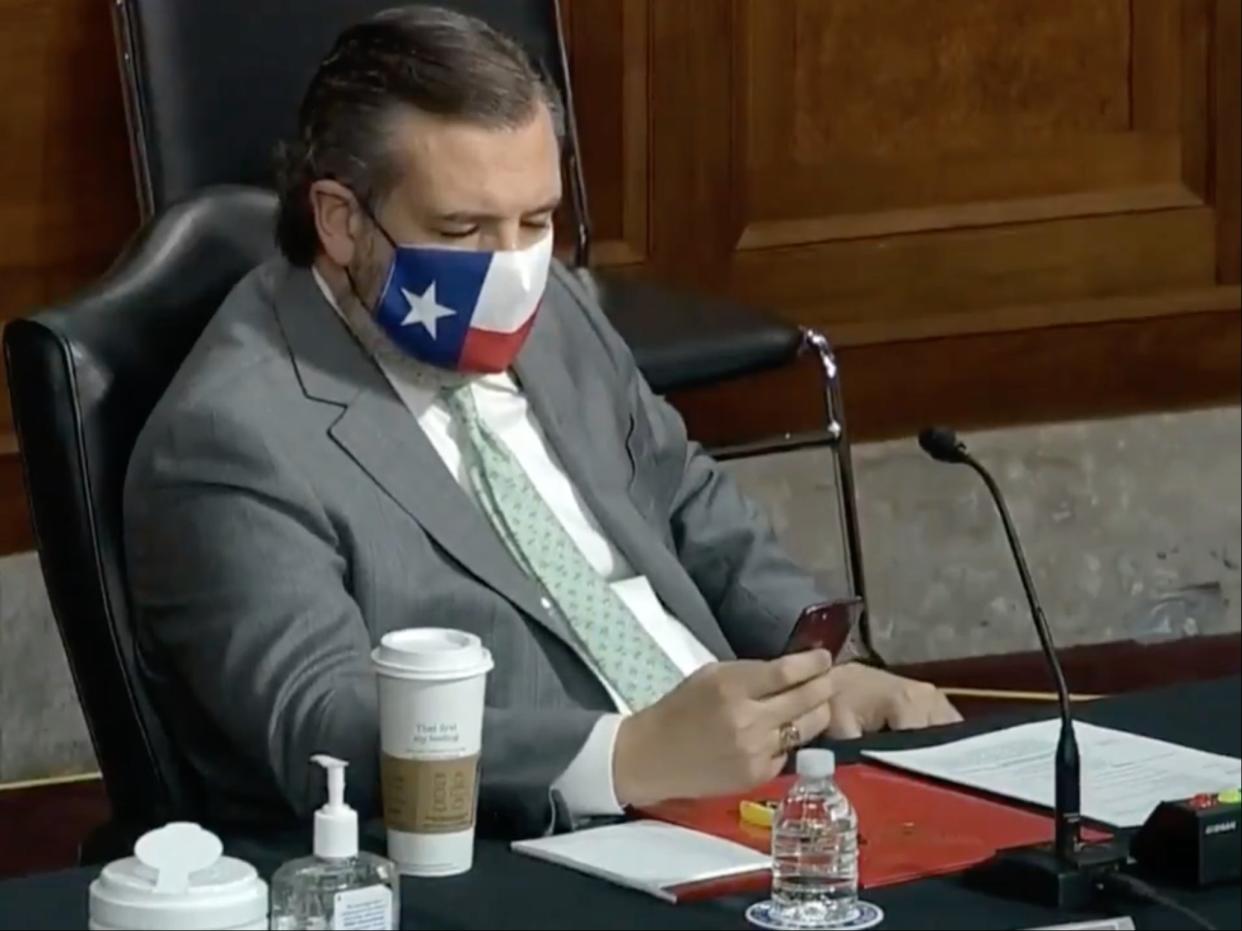We couldn’t even get through one Senate hearing about the Capitol riot without Republican shenanigans

After the January 6 insurrection, countless questions arose, but one central question loomed the largest: How exactly were radicalized insurgents allowed to publicly plan and successfully launch an invasion of the US Capitol building? If you were looking for answers in today’s hearing, you left with more questions.
Today’s hearing featured former Capitol Police Chief Steven Sund, former House Sergeant at Arms Paul Irving, former Senate Sergeant at Arms Michael Stenger, and Acting Chief of Metropolitan Police Robert Contee. And rather than getting clarity on what happened, the events all too quickly unraveled into a circular blame squad.
While the vast majority of Capitol officers on the ground that day bravely fought off insurrectionists and protected what they could, it’s clear that the leaders responsible for getting them the resources they needed failed them. In spite of the conflicting testimony we heard today, a picture of what happened did become clearer. This was a failure of intelligence threat assessments and a failure of communication which culminated in a failure of resources.
I say that this was a failure of intelligence threat assessments because the intelligence was there — it just wasn’t properly assessed. The planning of the insurrection was happening in plain sight on social media. After Trump put a spotlight on the date of January 6 in December, anyone who cared to pay attention saw violent rhetoric building on both mainstream and alternative social media platforms like Parler. As NBC’s Ben Collins noted, many soon-to-be insurrections were being very specific about their intentions, including January 5 posts on 8kun that stated: “As many patriots as can be... We will storm the government buildings, kill cops.”
The main point of contention regarding intelligence during the hearing was around a January 5 report from the Norfolk FBI office. On the eve of the attack, the FBI emailed the Capitol Police a report warning that extremist groups were talking about a violent attack on the Capitol and specifically mentioning their intent to wage “war.”
Former Capitol Police Chief Sund made a remarkable revelation today when he asserted that he was made aware of that report just 24 hours ago. Both Senate Rules Committee Chairwoman Senator Amy Klobuchar (D-MN) and Homeland Security Committee Chairman Senator Gary Peters (D-MI) pressed this issue further in multiple rounds of questioning. Sund said that the report was received by the Capitol Police intelligence department but it never made it higher than that. The fact this bulletin didn’t make it to operational commanders appears to be a stunning oversight.
While many would blame the Capitol Police, Chief Contee put the onus on the FBI, saying that a late-night evening email was not sufficient to highlight the threat. That being said, Sund did acknowledge that there was prior intelligence that signaled white supremacists and other extremists could become violent in DC on January 6, but he compared it to intelligence from past MAGA protests.
Sund’s claims run contrary to reports of an internal January 3Capitol police intelligence report that warned, “Supporters of the current president see January 6, 2021, as the last opportunity to overturn the results of the presidential election... Unlike previous post-election protests, the targets of the pro-Trump supporters are not necessarily the counter-protesters as they were previously, but rather Congress itself”. Pretty specific.
From what I gathered from this hearing, the intelligence was known. Law enforcement was well aware of the potential for a violent attack on the Capitol but a proper threat assessment wasn’t made because it derived mainly from online chatter that wasn’t taken seriously. Trump supporters were organizing this publicly but there seemed to be a general assumption they were “all talk”.
The hearing then devolved into a key miscommunication around when the National Guard was requested. There is agreement that the Capitol Police requested National Guard support before January 6 but was denied by then-House Sergeant at Arms Irving. But Sund claims that Irving said it was denied due to “optics.” Irving says that wasn’t the case. Neither could agree exactly why the National Guard didn’t reach Congress in an ideal time frame while the insurrection was happening.
The bigger picture story, of course, is about the federal government. As we know, then-President Trump did not immediately deploy the National Guard and when they were deployed, he was not involved in that decision; Mike Pence was. In the end, they didn’t arrive until after 5pm.
Of course, there can’t be a Senate hearing in the post-Trump era without some Republican shenanigans. The most notable moment came from conspiracy theory-obsessed Senator Ron Johnson (R-WI) who read an article that claimed “provocateurs” and “fake Trump protesters” were responsible for the insurrection. This is absolute disinformation seeking to absolve Trump and his base of blame.
Both Senators Ted Cruz (R-TX) and Josh Hawley (R-UT) very subtly tried to feed the false narrative that Speaker of the House Nancy Pelosi was responsible for the security failures (at least when Cruz wasn’t playing on his phone). They asked former House Sergeant at Arms Irving if he had any conversations with Pelosi or needed approval to deploy additional resources. The answer was no. Just like that, the false narrative crumbled.
This was only the first of many hearings to come on the January 6 insurrection. Pelosi is also moving to establish an independent commission to examine the security failures. President Biden has asked the intelligence community for a threat assessment on domestic terrorism generally.
One thing is clear: America has a domestic terrorism problem and right-wing extremists make up the vast majority of that threat. If our law enforcement agencies do not take this threat seriously and refuse to take new counter-extremism measures, what we saw at the Capitol building will only be the beginning.

